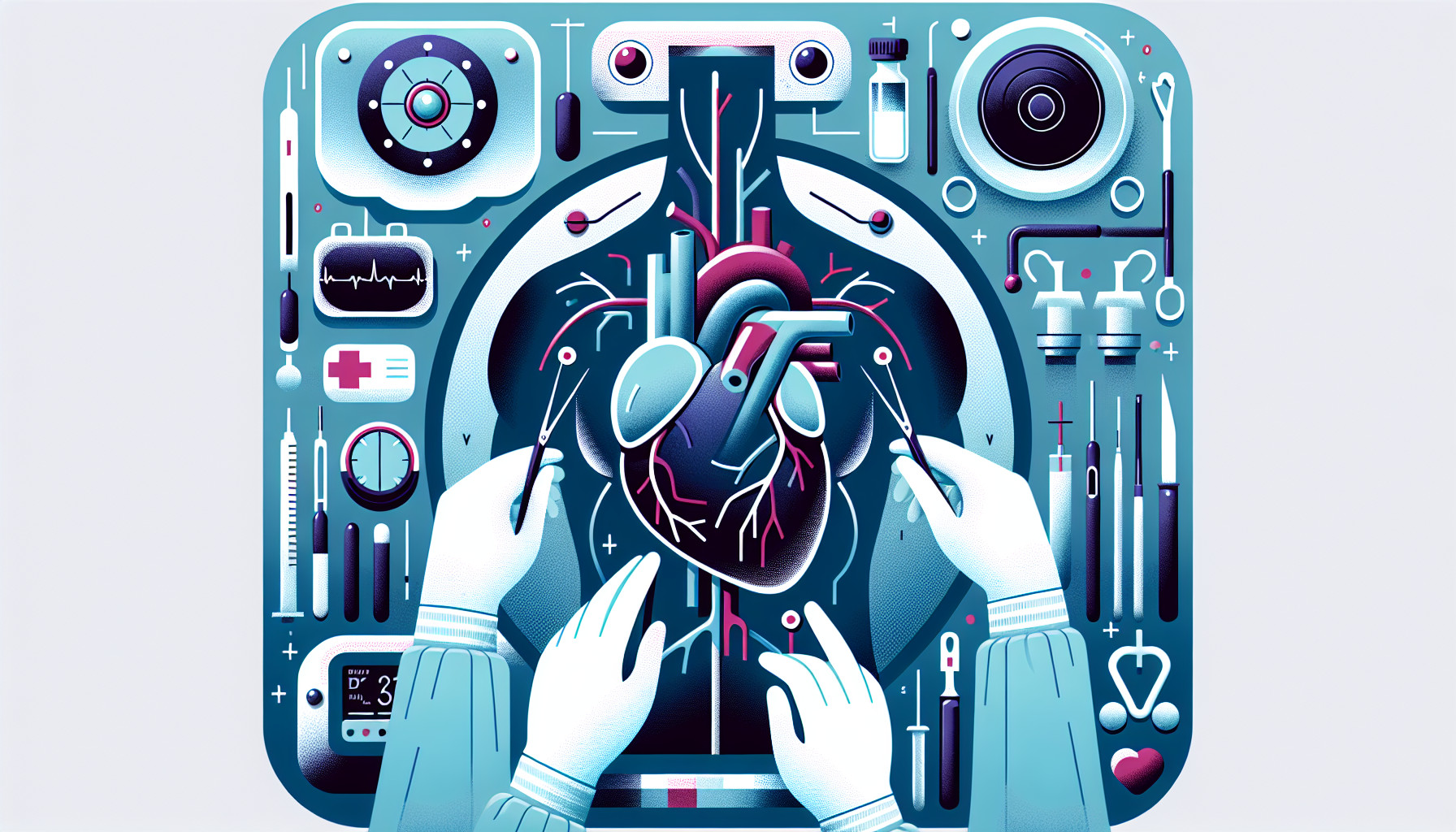Our Summary
This research paper explores the factors and outcomes associated with switching from off-pump to on-pump coronary artery bypass grafting (CABG), a surgical procedure to improve blood flow to the heart. Out of 4718 patients who were randomly chosen for either off- or on-pump CABG, 7.9% had to be converted from off-pump to on-pump during the procedure. Researchers found that this conversion was often due to emergencies like low blood pressure or restricted blood flow, or elective reasons like small or intramuscular coronary arteries.
Patients who underwent an emergency conversion had longer surgery times, needed more blood transfusions, stayed longer in the ICU, and had higher rates of death, stroke, heart attack, or kidney failure requiring dialysis within a year of the surgery. However, those who had an elective conversion didn’t have different outcomes than those who didn’t need to be converted.
The study identifies high heart rate or chronic atrial fibrillation, the need for urgent surgery, plans for more grafts, and the surgeon’s experience with off-pump CABG as factors that increase the likelihood of emergency conversion. The researchers suggest that if these risk factors are present, it may be safer to plan for an on-pump procedure from the start.
FAQs
- What factors increase the likelihood of emergency conversion from off-pump to on-pump CABG?
- Are the outcomes different for patients who undergo elective conversion compared to those who do not need conversion?
- What are the potential complications for patients who undergo an emergency conversion during CABG?
Doctor’s Tip
One helpful tip a doctor might tell a patient about coronary artery bypass is to discuss with their surgeon the possibility of needing a conversion from off-pump to on-pump during the procedure. Understanding the potential risks and outcomes associated with emergency conversions can help patients make informed decisions about their treatment plan. It may also be beneficial for patients to ask their surgeon about their experience with off-pump CABG and how they plan to minimize the risk of emergency conversions during the surgery. By being proactive and informed, patients can work with their healthcare team to optimize their outcomes and recovery after coronary artery bypass surgery.
Suitable For
Typically, patients who are recommended for coronary artery bypass surgery are those with severe coronary artery disease that cannot be effectively treated with medication or less invasive procedures like angioplasty. Patients who have significant blockages in multiple coronary arteries, have already had a heart attack, or have unstable angina may be candidates for CABG. Additionally, patients with diabetes, left main coronary artery disease, or reduced heart function may also be recommended for CABG.
Overall, the decision to recommend CABG is based on a thorough evaluation of the patient’s medical history, symptoms, and the severity of their coronary artery disease. It is important for patients to discuss their treatment options with their healthcare provider to determine the best course of action for their individual situation.
Timeline
Before the coronary artery bypass surgery, the patient will typically undergo diagnostic tests such as an angiogram to determine the extent of blockages in the arteries. They may also need to make lifestyle changes, such as quitting smoking or improving their diet, to reduce the risk of complications during and after surgery.
During the surgery, the patient is put under general anesthesia, and the surgeon will either perform the procedure on-pump (using a heart-lung machine to circulate blood) or off-pump (without the use of a heart-lung machine). If the surgery needs to be converted from off-pump to on-pump, it is usually due to emergency situations like low blood pressure or restricted blood flow.
After the surgery, the patient will typically spend time in the intensive care unit (ICU) to monitor their recovery. They may need medications to manage pain, prevent infection, and reduce the risk of blood clots. Physical therapy may also be recommended to help the patient regain strength and mobility.
In the weeks and months following the surgery, the patient will need to attend follow-up appointments with their healthcare provider to monitor their progress and make any necessary adjustments to their treatment plan. It is important for the patient to follow their healthcare provider’s recommendations for medications, lifestyle changes, and rehabilitation to improve their long-term outcomes and reduce the risk of future heart problems.
What to Ask Your Doctor
Some questions a patient should ask their doctor about coronary artery bypass include:
- What are the risks and benefits of off-pump versus on-pump CABG for my specific situation?
- What factors would increase the likelihood of needing to be converted from off-pump to on-pump during the surgery?
- How experienced are you with performing off-pump CABG procedures?
- How will you monitor my condition during the surgery to ensure a successful outcome?
- What are the potential complications associated with both off-pump and on-pump CABG, and how are they managed?
- Will I need additional grafts or procedures in the future that may require on-pump surgery?
- How will my recovery and long-term outcomes differ between off-pump and on-pump CABG?
- How will you decide during the surgery whether to proceed with off-pump or convert to on-pump if necessary?
- What are the alternatives to CABG, and why do you recommend this specific procedure for me?
- Can you provide me with more information or resources to help me better understand the procedure and make an informed decision about my treatment plan?
Reference
Authors: Stevens LM, Noiseux N, Avezum A, Ayapati DR, Chen X, Lucchese FA, Cacheda H, Parvathaneni S, Ou Y, Lamy A; CORONARY Investigators. Journal: Eur J Cardiothorac Surg. 2017 Mar 1;51(3):539-546. doi: 10.1093/ejcts/ezw361. PMID: 28082464
